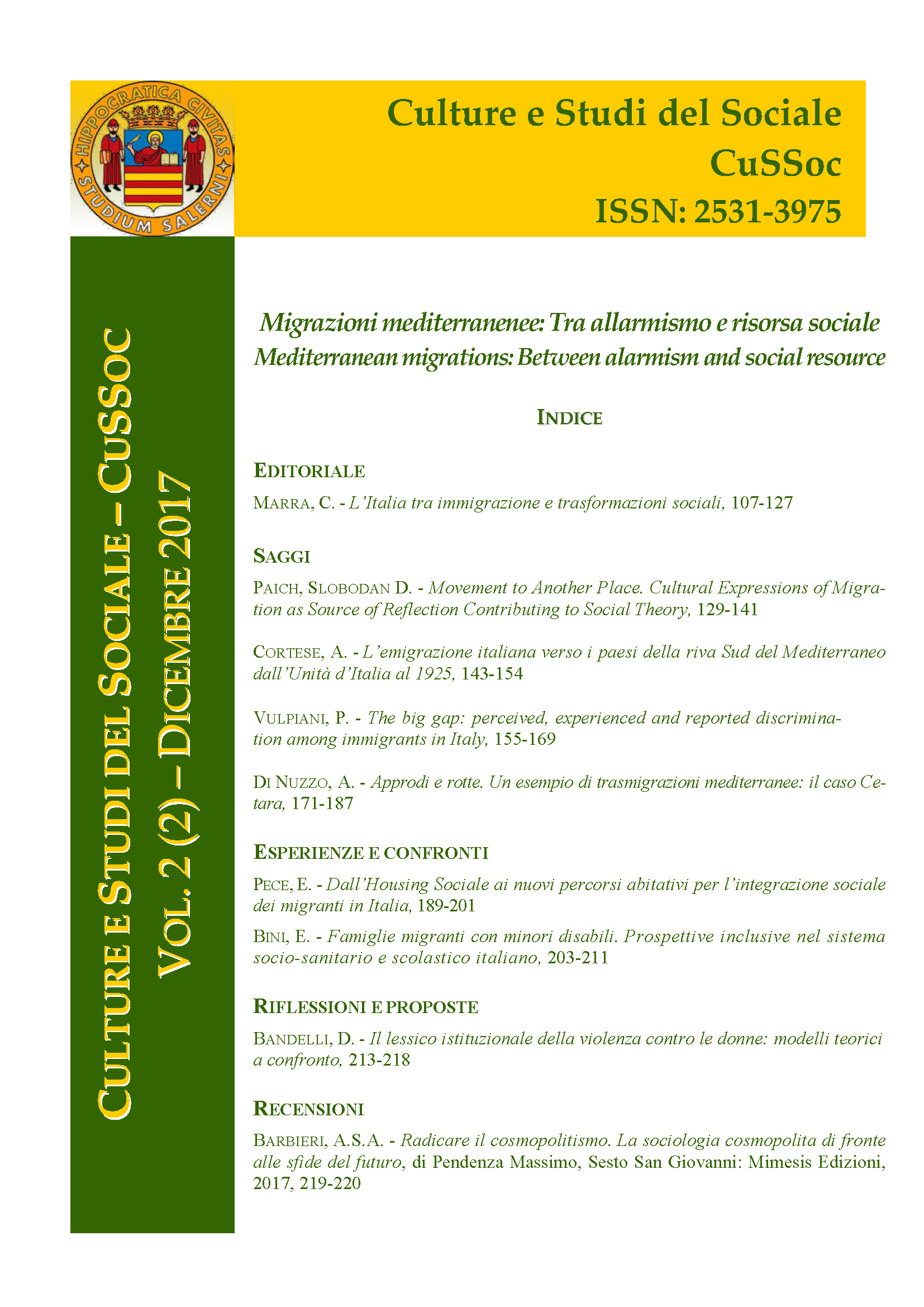Movement to Another Place. Cultural Expressions of Migration as Source of Reflection Contributing to Social Theory
Abstract
Methodologies are explored to enriching migration theory, with an inter-disciplinary look into cultural expressions resulting from migration. Cultural and migration maps offer a comparative and diachronic insight into migration impulses and waves.Migration of ideas and techniques is also examined through artifacts resulting from forced or intended move-ment of people and experts. Two contemporary plays evolved from the stories of migrants/refugees offer probing and open-ended speculation about itinerancy, vagrancy, resettlement and economic emigration as part of social plurality. The tangible, visceral qualities of expression may shed light on issues too complex for verbal theory only. Approached is comparative examination of stylization in art and abstraction in theoretical inquiry. Asking: What kind of procedures and institutions retain connection to the vitality of the samples studied or portrayed? Proposing inquiry not only focused on issues in the world but also on how they are represented, measured and defined.
References
Bacci Spigo, G.M. (1992/1993). Nuove ricerche a Messina: rapporti con l’archeologia Eoliana. Mediterranean Archaeology, 5-6, 15-22.
Contu, G. (2005). Sardinia in Arabic sources.Annali della Facoltà di Lingue e Letterature Straniere dell’Università di Sassari, 3, 287-297.
Cunliffe, B. (2001). Facing the Ocean. The Atlantic and its People. Oxford: Oxford University Press.
de Haas, H. (2008). A Migration and development.A theoretical perspective. Working papers - International Migration Institute, James Martin 21st Century School, University of Oxford, 9, 1-57.
Halliwell, S. (2002).The aesthetics of mimesis: Ancient texts and modern problems Princeton, NJ: Princeton University Press.
Harding, K. (1996). The Zar Revisited.Crescent Moon magazine, July-Aug, 9-10.
Holloway, R.R. (1997). The Classical Mediterranean, its Prehistoric Past and the Formation of Europe. Corleone: I Congresso Internationale di Preistoria e Protostoria Siciliane.
Kirsher A. (1643). Magnes sive de Arte Magnetica (Opus Tripartium), Rome: Coloniae Agrippinae.
Kolb, M.J. & Speakman, R.J. (2005). Elymian regional interaction in Iron Age western Sicily: a preliminary neutron activation study of incised/impressed tableware. Journal of Archaeological Science 32, 795-804.
Lunde, P. (2005) Monsoons, mude and gold. Saudi Aramco World, 56(4), 4-11.
Massey, D.S, Arango, J., Hugo, G, Kouaouci, A., Pellegrino, A., Taylor, J.E. (1993). Theories of international migration: A review and appraisal. Population and Development Review, 19, 431-466.
Meltzoff, A.N. & Decety, J.S. (2003). What imitation tells us about social cognition: a rapprochement between developmental psychology and cognitive neurosci-ence.Philosophical transaction of the Royal Society of London. Serie B, Biological Sci-ences, 358(1431), 491-500.
Oatley, K. (2011, April 11), Does Art Imitate Life? Fictional characters seem real, but they are of the mind. Psychology Today. Retrivied April 15, 2011, from: https://www.psychologytoday.com/blog/the-psychology-fiction/201104/does-art-imitate-life
Poggioli, S. (2007, August 7). Venice Exhibit Traces the Migration of Culture. NPR. Retrieved August 14, 2017, from http://www.npr.org/templates/story/story.php?storyId=12433888
Posner, M., Rothbart, M.K., Sheese, B.E., & Kieras, J. (2008). How arts training influences cognition. In C. Asbury & B. Rich (Eds.), Learning, arts, and the brain (pp. 1-10). New York: Dana Press.
Robinson, A.R. & Leslie, W.G. (2001). Mediterranean Sea Circulation. Harvard: Academic Press.


